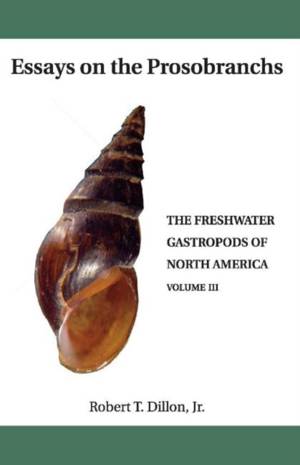
- Afhalen na 1 uur in een winkel met voorraad
- Gratis thuislevering in België vanaf € 30
- Ruim aanbod met 7 miljoen producten
- Afhalen na 1 uur in een winkel met voorraad
- Gratis thuislevering in België vanaf € 30
- Ruim aanbod met 7 miljoen producten
Zoeken
Omschrijving
The rivers, lakes, and streams of North America are inhabited by a diverse assortment of gill-bearing freshwater snail populations collectively called "prosobranchs." Prosobranchs are typically longer-living and slower-growing than the more familiar pulmonate snails, inhabiting more permanent and stable bodies of water. There is reason to think that some prosobranch populations from Southern Appalachian drainages may have evolved hundreds of millions of years ago and remained morphologically unchanged ever since.Collected in this volume are 37 essays on the systematics and evolutionary biology of North American prosobranch gastropods. The tension between gene trees and species trees, explored at some length using pulmonate models in Volume II, is aggravated in prosobranch populations by a phenomenon here described as "mitochondrial superheterogeneity." The challenge introduced by ecophenotypic variation in shell morphology, also evident in populations of pulmonate snails, is further explored. A new term, "Goodrichian Taxon Shift," is coined to describe intrapopulation variance so extreme as to prompt an erroneous hypothesis of speciation and generalized to "Cryptic Phenotypic Plasticity" in later chapters.Some North American populations of freshwater prosobranch snails have been listed as objects of conservation concern. This introduces a new subtheme into Volume III, the relationship between science and public policy. The taxonomic revisions prompted by improvements in our understanding of the evolution of prosobranchs have sometimes met resistance both from natural resource agencies and from conservation biologists dependent upon such agencies for funding. The overarching theme of the present volume becomes, then, one of a struggle to understand the evolution of the freshwater prosobranch gastropod fauna of North America, both finely scientific and clumsily human.Volume I in this series analyzed the results of a scientific survey of the freshwater gastropod fauna of the Atlantic drainages from Georgia to the New York line. The essays collected here in Volume III, together with those in Volume II (Pulmonates) and Volume IV (Ecology and Biogeography), will be essential companions to Volume I, as well as to additional volumes on the gastropod faunas of interior drainages forthcoming.
Specificaties
Betrokkenen
- Auteur(s):
- Uitgeverij:
Inhoud
- Aantal bladzijden:
- 270
- Taal:
- Engels
- Reeks:
- Reeksnummer:
- nr. 3
Eigenschappen
- Productcode (EAN):
- 9780960084326
- Verschijningsdatum:
- 12/05/2019
- Uitvoering:
- Paperback
- Formaat:
- Trade paperback (VS)
- Afmetingen:
- 137 mm x 213 mm
- Gewicht:
- 476 g

Alleen bij Standaard Boekhandel
+ 94 punten op je klantenkaart van Standaard Boekhandel
Beoordelingen
We publiceren alleen reviews die voldoen aan de voorwaarden voor reviews. Bekijk onze voorwaarden voor reviews.











